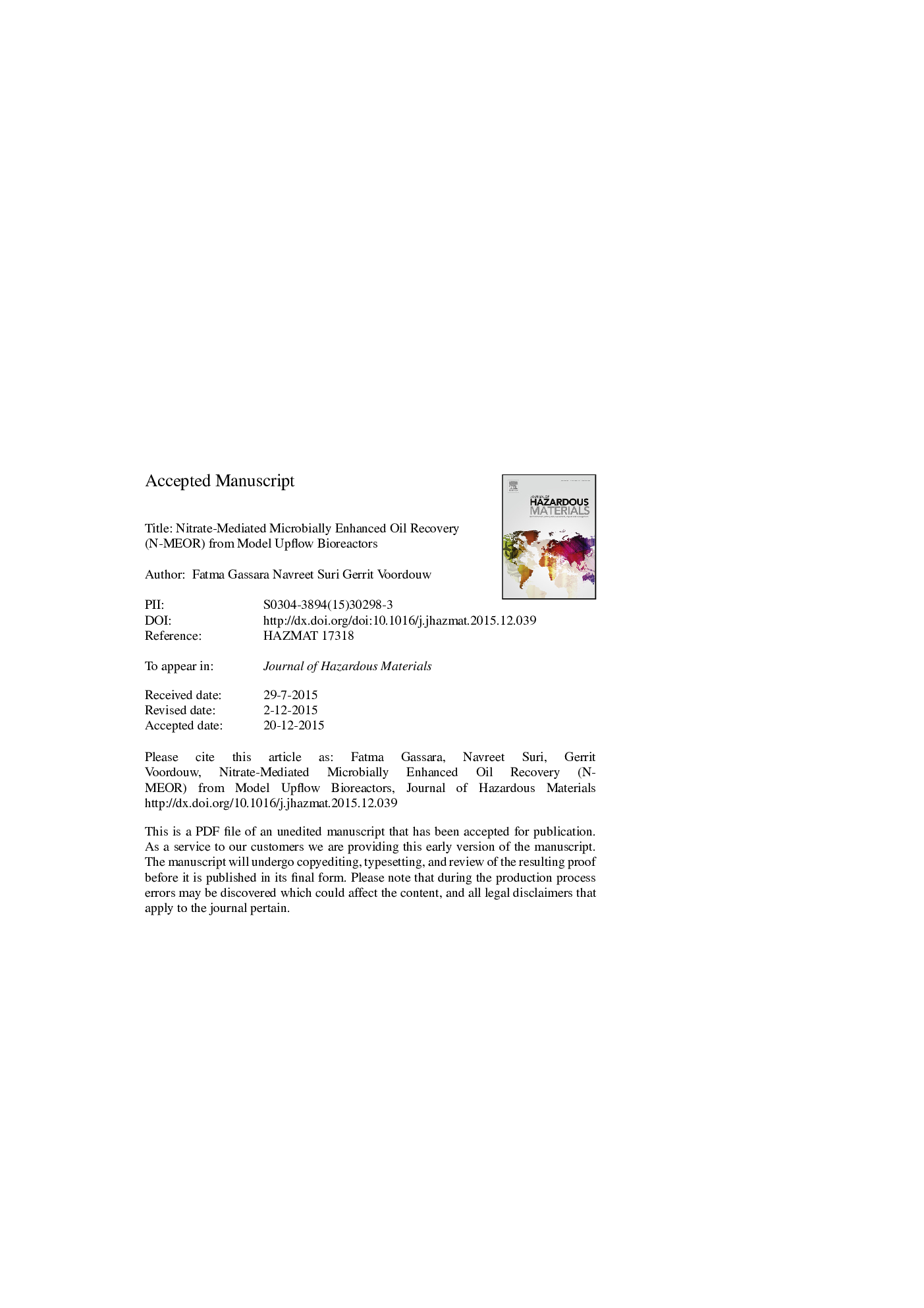| Article ID | Journal | Published Year | Pages | File Type |
|---|---|---|---|---|
| 4979925 | Journal of Hazardous Materials | 2017 | 19 Pages |
Abstract
Microbially Enhanced Oil Recovery (MEOR) can enhance oil production with less energy input and less costs than other technologies. The present study used different aqueous electron donors (acetate, glucose, molasses) and an aqueous electron acceptor (nitrate) to stimulate growth of heterotrophic nitrate reducing bacteria (hNRB) to improve production of oil. Initial flooding of columns containing heavy oil (viscosity of 3400 cP at 20 °C) with CSBK (Coleville synthetic brine medium) produced 0.5 pore volume (PV) of oil. Bioreactors were then inoculated with hNRB with 5.8 g/L of molasses and 0, 10, 20, 40, 60 or 80 mM nitrate, as well as with 17 mM glucose or 57 mM acetate and 80 mM nitrate. During incubations no oil was produced in the bioreactors that received 5.8 g/L of molasses and 0, 10, 20, 40 or 60 mM nitrate. However, the bioreactors injected with 5.8 g/L of molasses, 17 mM glucose or 57 mM acetate and 80 mM nitrate produced 13.9, 11.3 ± 3.1 and 17.8 ± 6.6% of residual oil, respectively. The significant production of oil from these bioreactors may be caused by N2-CO2 gas production. Following continued injection with CSBK without nitrate, subsequent elution of significant residual oil (5-30%) was observed. These results also indicate possible involvement of fermentation products (organic acids, alcohols) to enhance heavy oil recovery.
Related Topics
Physical Sciences and Engineering
Chemical Engineering
Chemical Health and Safety
Authors
Fatma Gassara, Navreet Suri, Gerrit Voordouw,
